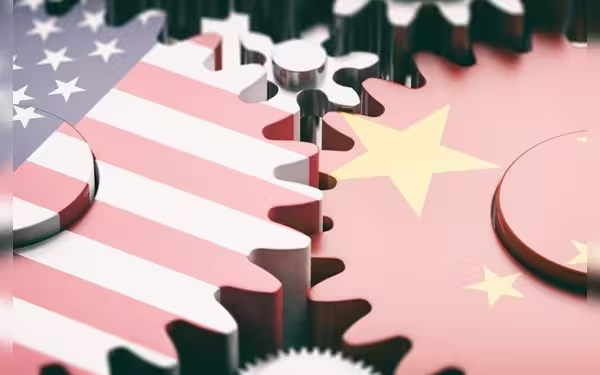Saturday, November 16, 2024 05:42 PM
US-China Economic Decoupling: Challenges and Opportunities
- US and China account for over 40% of global GDP.
- Vietnam emerges as a key alternative manufacturing hub.
- Decoupling presents both challenges and opportunities for third-party nations.
 Image Credits: asiatimes
Image Credits: asiatimesThe US-China economic decoupling reshapes global trade, presenting challenges and opportunities for third-party nations.
The economic decoupling between the United States and China is a significant development that is currently taking place. This situation is not just a theory anymore; it is happening right now and will have a big impact on the global economy. The reasons behind this split include trade imbalances, competition in technology, and concerns about national security. As both countries move further apart, it is clear that this change will shape the future of the 21st century. No matter who wins the next US presidential election, the path of confrontation with China seems to be set in stone. Both major political parties in the US are taking a tough stance against China, viewing the relationship as one of rivalry.
To manage this rivalry, tools such as tariffs, export controls, and changes in supply chains will continue to be used. The decoupling between these two economic giants is not just a possibility; it is an unavoidable reality. This growing divide will have serious consequences, especially for third-party countries. These nations, which include major economies like India and Germany, as well as emerging markets like Vietnam and Mexico, depend heavily on both the US and China for trade, investment, technology, and security partnerships.
As the world’s two largest economies drift apart, the pressing question for these countries is not whether they will be affected, but rather how they will manage this divide. Together, the US and China account for over 40% of the global GDP. If the decoupling accelerates, it could lead to fragmented supply chains, competing technological standards, and separate economic spheres of influence. For third-party countries, this situation means higher business costs, less global innovation, and changes in trade patterns.
The COVID-19 pandemic and ongoing trade disputes have already forced companies to rethink their supply chains. Further disruptions are likely as the world becomes increasingly divided between the US and China. This decoupling is happening in five distinct phases, each presenting both challenges and opportunities for third-party nations. The first phase, which is already in progress, involves the realignment of global supply chains. US companies are trying to reduce their reliance on China, especially in critical sectors like semiconductors, pharmaceuticals, and consumer electronics.
As a result, countries like Vietnam, Mexico, and India are emerging as alternative manufacturing hubs, attracting investment that is shifting away from China. For instance, Vietnam experienced a remarkable 10.5% increase in foreign direct investment (FDI) in the first half of 2023, while China’s FDI saw a decline of 5.6% during the same period. This trend highlights Vietnam’s potential as a key player in the diversification strategies of multinational companies.
The ongoing economic decoupling between the US and China presents both challenges and opportunities for countries caught in the middle. As nations navigate this complex landscape, it is essential for them to adapt and find new ways to thrive in a world that is increasingly defined by competition between these two superpowers. The ability to pivot and innovate will be crucial for third-party countries to not only survive but also prosper in this new economic reality.













